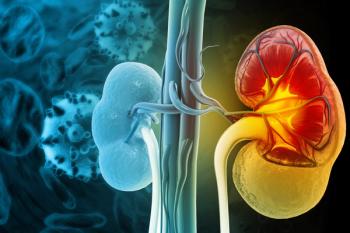
Influenza Hospitalizations in Children Reveal Significant Non-respiratory Complications
Key Takeaways
- Influenza in children frequently results in non-respiratory complications, highlighting the need for broader clinical awareness and management strategies.
- Children with non-respiratory influenza presentations are older, more often infected with influenza B, and less likely to receive antiviral treatment.
New research reveals significant non-respiratory complications in hospitalized children with influenza, highlighting the need for improved clinical awareness and antiviral treatment.
Over a decade of population-based surveillance through the Influenza Hospitalization Surveillance Network (FluSurv-NET) shows that although influenza is widely recognized as a respiratory virus, a substantial proportion of hospitalized children experience serious non-respiratory complications.
The findings, which researchers presented at IDWeek 2025 (October 19 to October 22, Atlanta, Georgia) demonstrate that influenza’s burden in pediatric populations extends far beyond the lungs and warrants greater clinical attention, especially among pharmacists and inpatient care teams who help guide antiviral therapy, supportive care, and vaccine uptake.¹
Broad Spectrum of Pediatric Influenza-Associated Disease
An extensive cohort study spanning 2010–2011 to 2022–2023 found that 17,442 children under 18 years were hospitalized with laboratory-confirmed influenza, and 16,233 had at least 1 acute International Classification of Diseases (ICD)-coded diagnosis.¹ Most of these (15,800) had a respiratory diagnosis; however, 4,469 had at least 1 non-respiratory diagnosis, and 433 had only non-respiratory diagnoses. The non-respiratory complication categories, most frequently, were orbit/ear/mastoid disorders, neurologic complications, hematologic complications, sepsis, and gastrointestinal complications.¹
These findings reinforce that influenza can manifest as a multi-organ disease in hospitalized children, particularly in the post-2009 H1N1 era when pediatric complications became more widely tracked.²
Children With Non-respiratory Presentations Differ Clinically
Children who had only non-respiratory diagnoses were significantly different from those with respiratory involvement. They were older (median 5.1 vs 2.6 years; P <.0001), were more often infected with influenza B (32% vs 23%; P <.0001), and had a higher probability of being medically conditioned (59% vs 53%; P =.015).¹ Although children from the non-respiratory-only group had a higher risk profile, they were less likely to be given antiviral therapy (38% vs 63%; P < .001).¹
Delayed recognition of influenza when symptoms do not correspond to the expected respiratory presentation may explain this substantial difference in treatment, which is a very important consideration for frontline clinicians and pharmacists who guide antiviral initiation.
Severe Outcomes Associated With Multi-Organ Involvement
The FluSurv-NET analysis highlighted a range of non-respiratory inflammatory-related diagnoses that led to a significant increase in morbidity. Children suffering from sepsis, acute kidney injury, or cardiovascular complications showed some of the highest rates of intensive care unit (ICU) admission, mechanical ventilation, and in-hospital mortality.¹ For instance, the median hospital stay for children with sepsis was 3.9 days, 31% of them were put on mechanical ventilation, and 5.2% died during hospitalization.¹ The mortality rate of cardiovascular complications was the highest, nearly 19.7%.¹
These results align with previously published data that indicate systemic and neurologic complications during pediatric influenza seasons—such as encephalopathy and acute necrotizing encephalopathy—may lead to severe outcomes, including high neurologic morbidity and death.³
A comprehensive analysis of the pediatric influenza complications across various seasons reveals that multi-system involvement is quite frequent. According to CDC reports, one of the major reasons for increased pediatric mortality in recent seasons is the occurrence of neurological complications like influenza-associated encephalopathy (IAE) and acute necrotizing encephalopathy (ANE), thus pointing out that the flu can be very severe even if it spreads beyond the respiratory tract.³
Clinical Implications for Pharmacists and Healthcare Teams
Pharmacists are essential in minimizing flu-related health issues. The first step would be a universal immunization, which is advised for all children aged 6 months and older. Declines in pediatric influenza vaccination coverage in recent years raise concern, particularly given the high rates of non-respiratory complications.¹ Ensuring strong advocacy for vaccination—especially for children with underlying medical conditions—is essential.
The reduced use of antivirals in children with non-respiratory presentations highlights the importance of early empiric antiviral therapy for all hospitalized children with suspected influenza, regardless of presenting symptoms.¹ Evidence from earlier pandemic research also supports early antiviral initiation to prevent severe complications, particularly among high-risk children.²
Conclusion
The extensive, multi-season study of this large group of children has shown that a considerable number of kids who have been admitted to the hospital due to influenza develop non-respiratory complications, and some of these complications have very high rates of morbidity and mortality. Children whose initial presentation is non-respiratory are older, have a higher probability of having some underlying medical condition, are more often infected with influenza B, and are less likely to be given antivirals. Enhanced recognition of non-respiratory manifestations of influenza, along with vaccination at its best and antiviral therapy at the right time, can serve as prevention strategies and improve clinical outcomes in pediatric patients.
REFERENCES
Kamidani S, Witt LS, Patterson A, et al. P-544 Respiratory and Nonrespiratory Complications in Children Hospitalized with Influenza in the Post-2009 H1N1 Pandemic Era. Presented at: IDWeek 2025; October 21, 2025; Atlanta, GA. Accessed November 3, 2025, via IDWeek’s online conference platform.
Libster R, Bugna J, Coviello S, et al. Pediatric hospitalizations associated with 2009 pandemic influenza A (H1N1) in Argentina. The New England Journal of Medicine. 2010;362(1):45-55. doi:10.1056/NEJMoa0907673
Reinhart K, Huang S, Kniss K, Reed C, Budd A. Influenza-Associated Pediatric Deaths — United States, 2024–25 Influenza Season. MMWR Morbidity and Mortality Weekly Report. 2025;74(36):565-569. doi:10.15585/mmwr.mm7436a2
Newsletter
Stay informed on drug updates, treatment guidelines, and pharmacy practice trends—subscribe to Pharmacy Times for weekly clinical insights.


























































































































































































































